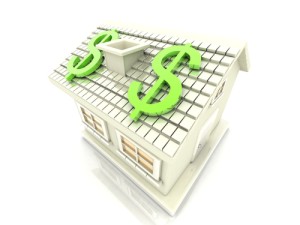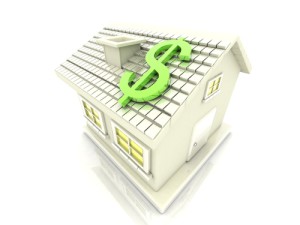Professionals Answer: “How Do I Increase My Home’s Value?” (Part 2 of 3)
 A common question sellers ask is “What can I do to get the maximum selling price on my home?” Since each home and every market is different, we, as your real estate professionals, can give you specific advice on your home. In general, however, if you’re willing to spend a little bit on some minor upgrades, a higher return on your investment can be significant. We covered the “no-to-low cost” items in part 1 of this series and in this post we suggest some low to medium cost options for improving that selling price. One of the ways you can increase the value of your home is by installing a more energy-efficient cooling and heating system product. Energy efficiency has become a well-loved feature in modern homes.
A common question sellers ask is “What can I do to get the maximum selling price on my home?” Since each home and every market is different, we, as your real estate professionals, can give you specific advice on your home. In general, however, if you’re willing to spend a little bit on some minor upgrades, a higher return on your investment can be significant. We covered the “no-to-low cost” items in part 1 of this series and in this post we suggest some low to medium cost options for improving that selling price. One of the ways you can increase the value of your home is by installing a more energy-efficient cooling and heating system product. Energy efficiency has become a well-loved feature in modern homes.
$$
If you have a little money to spend, the next items on your list should be these easy improvements:
- Paint. In terms of “bang for your buck,” paint is your best friend. Gone are the days when you should paint everything white, but covering smudged or dirty walls with a pretty neutral color (off-whites, grays, creams and earthy tones) brightens your walls, covers over a host of slight imperfections and freshens their look without breaking the bank. A contrasting color on trim and woodwork brings out architectural details. Add a new coat of paint on the ceilings — paint these white or a light off-white— to brighten and light up a room. Paint the front door, too! A bright, cheery front door adds a welcoming touch.
- Update light fixtures. Ceiling lights, vanity lights and exterior carriage and porch lights are inexpensive items to update. Often, larger home-improvement stores offer “contractor packs” of multiple light fixtures for a lower price, so you can update all the rooms.
- Change out electrical outlets and switch-plates. Simply updating outlets and outlet covers, light switches and switch-plates can give a home an updated appearance. As with light fixtures, electrical components often come in contractor packs. If you are not comfortable changing out the switches and outlets yourself and don’t want to hire an electrician, just change out the covers. You might also consider having electrical trenching with the help of licensed electrical contractors if you need to upgrade your electrical systems.
- Replace bath fixtures. New faucets, along with towel bars, hooks and other matching pieces bring a brand new look to most bathrooms. Make sure your shower curtains are clean, fresh and neutral. If you have the extra money, changing out the toilet for a new water-saving low-flow toilet is an effective upgrade. Along the same vein, if your lavatory sink is cracked, stained or chipped, you may want to switch it out for a new one.
- Kitchen hardware and faucet. Just as simply adding new fixtures improves the bath, a new faucet and fresh, updated hardware on your cabinetry can freshen and upgrade the feel of your kitchen. Make certain that cabinet latches are not broken and drawer glides all work properly. Re-paint painted cabinetry and clean and re-stain finished wood cabinetry.
- Fix or replace your front door. Sometimes paint is not enough. If your pets have scratched your front door, or it has dry rot, is swollen, or the layers are separating, consider replacing your door with a new one. In moisture prone areas, or for safety concerns, consider using a steel door, perhaps one with a decorative window, composite back doors keep your home secure and looking modern.
- Upgrade your garage door. Especially if your garage door is visible from the front of your home, consider painting or upgrading your garage door.
Let us help …
We can assess the potential R.O.I. for these and similar upgrades to your home. Call us for an evaluation of your home’s fair market value. You can even give your steel door a wood look with a faux wood-graining kit.
Compliments of Virtual Results




 It’s not your imagination that rent keeps going up. In fact, across the United States, from the end of summer 2013 to the end of summer 2014 rents increased over six percent … and in some housing markets rents increased by as much as 10%. Perhaps now is the time to make the move to home ownership but in case you are not resourceful enough, consider this
It’s not your imagination that rent keeps going up. In fact, across the United States, from the end of summer 2013 to the end of summer 2014 rents increased over six percent … and in some housing markets rents increased by as much as 10%. Perhaps now is the time to make the move to home ownership but in case you are not resourceful enough, consider this 
 When preparing to sell their home, a common question pops up. Homeowners want to know what they can do to get the maximum selling price on their home. Of course, the answer to “What can I do to increase my home’s value or get a better selling price?” is difficult to answer because each home has it’s own set of improvements, renovations or upgrades that might make the difference for it’s specific market. In general, however, potential improvements can be broken out by the amount the homeowner has available to spend and the return on investment, or R.O.I.
When preparing to sell their home, a common question pops up. Homeowners want to know what they can do to get the maximum selling price on their home. Of course, the answer to “What can I do to increase my home’s value or get a better selling price?” is difficult to answer because each home has it’s own set of improvements, renovations or upgrades that might make the difference for it’s specific market. In general, however, potential improvements can be broken out by the amount the homeowner has available to spend and the return on investment, or R.O.I. You walk into a home that potentially has the perfect layout, although the kitchen is dated, the floors need upgrading, the bathrooms are awkward … but the price is right and you’ve always wanted to customize a home … so you buy it with renovation in mind. How hard could it be? After all, those television shows kitchen remodeling an entire home over the course of a weekend.
You walk into a home that potentially has the perfect layout, although the kitchen is dated, the floors need upgrading, the bathrooms are awkward … but the price is right and you’ve always wanted to customize a home … so you buy it with renovation in mind. How hard could it be? After all, those television shows kitchen remodeling an entire home over the course of a weekend. having a bathroom or kitchen for weeks at a time. No only does it affect everyday life, it can pose a danger for children and pets. Not only can exposed asbestos or lead cause illness, but displaced tools, nails and other sharp objects may injure unsuspecting family members. During construction, expect a considerable amount of dust and debris. Clothing, dishware and other personal items may collect drywall dust. Breathing in dust, mold, and other detritus from construction can trigger respiratory illnesses.
having a bathroom or kitchen for weeks at a time. No only does it affect everyday life, it can pose a danger for children and pets. Not only can exposed asbestos or lead cause illness, but displaced tools, nails and other sharp objects may injure unsuspecting family members. During construction, expect a considerable amount of dust and debris. Clothing, dishware and other personal items may collect drywall dust. Breathing in dust, mold, and other detritus from construction can trigger respiratory illnesses.
 Not just relegated to the workspace or entertainment, home technology products focus on every room in your house. Check out these smart-home products geared to make your life easier:
Not just relegated to the workspace or entertainment, home technology products focus on every room in your house. Check out these smart-home products geared to make your life easier: One of the first decisions you make in your new house is where to place your furniture. In the living areas, furniture placement can make or break your home’s “flow” or ease of movement. A sofa placed just two feet one way or the other, a side table too far out of reach or a rug that catches in the doorway can make a magazine worthy design a frustrating living experience. It is advisable to consult a that specializes in
One of the first decisions you make in your new house is where to place your furniture. In the living areas, furniture placement can make or break your home’s “flow” or ease of movement. A sofa placed just two feet one way or the other, a side table too far out of reach or a rug that catches in the doorway can make a magazine worthy design a frustrating living experience. It is advisable to consult a that specializes in 

 If you’re new to home ownership, you may not be familiar with all of the responsibilities that are now yours. All of those things you used to call the super or management office for now fall in your lap.
If you’re new to home ownership, you may not be familiar with all of the responsibilities that are now yours. All of those things you used to call the super or management office for now fall in your lap.

 Catch Our Feed
Catch Our Feed Subscribe via Email
Subscribe via Email Follow Our Tweets
Follow Our Tweets Friend Us On Facebook
Friend Us On Facebook Watch Us On Youtube
Watch Us On Youtube